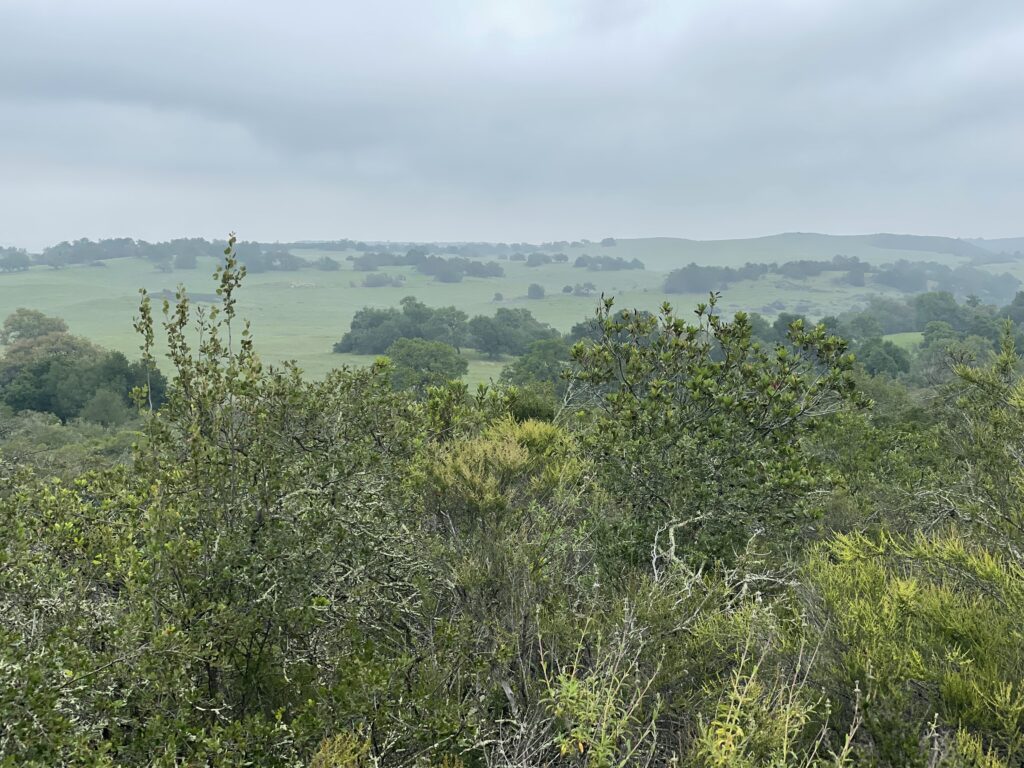
April in the Natural Garden
Diversity. It is what makes southern California’s flora so amazing, and the lack thereof is what makes southern California’s “ornamental” public landscape so dull. Take a hike, prepared with camera, sketch pad or notebook and you’re in for a pleasant treat. You’ll need a good wildflower guide in your pack or on your table back home to sort out all the details. Now take a drive around any residential tract. The commercial landscape is no comparison with its predictable (boring) plant selection and uniform plant structures, resulting from the constant so called “pruning” to which the gardens are continually subjected.
Now walk through your own natural garden. Refreshing, right? Lots of plant species growing together in a small space, properly cared for and loved… a tended ecosystem in miniature… with all the pertinent advantages: health, healing, wildlife, life, balance, and benefit to everyone.
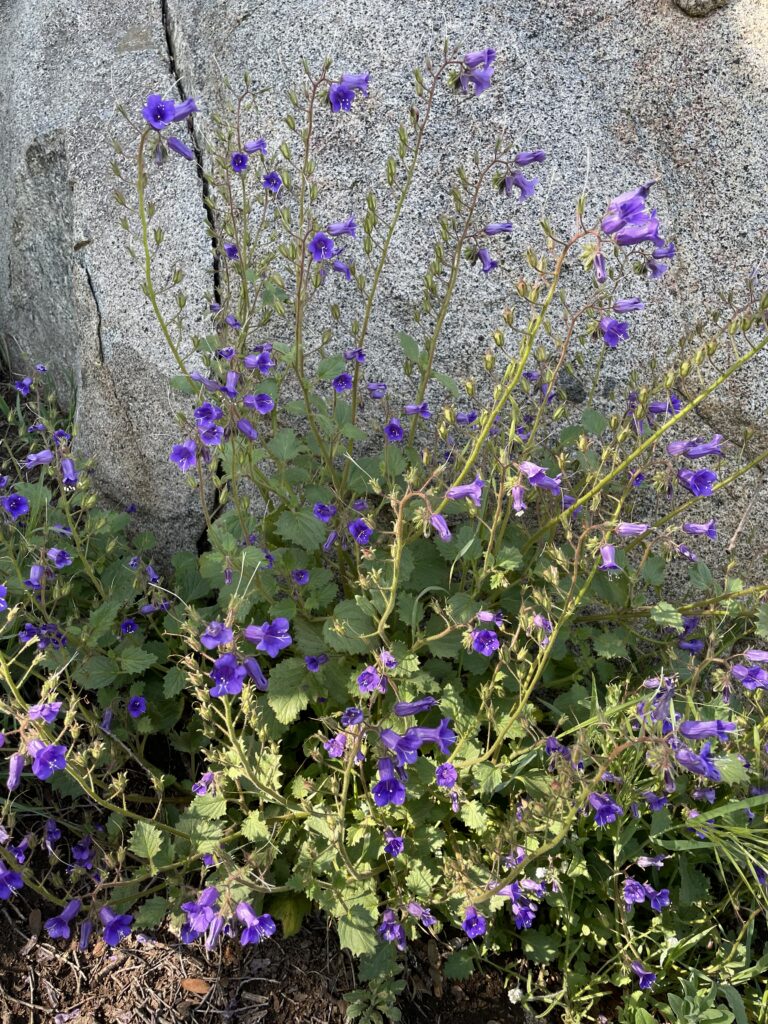
Current events, history, review, and notes
They say our average rainfall is around 12 – 16” a year. Let’s test that using the last 10 years’ measurements here at Tree of Life Nursery.
| Rain Season | Amount Inches |
|---|---|
| 2011-12 | 11.4 |
| 2012-13 | 7 |
| 2013-14 07.5 | 7.5 |
| 2014-15 | 10 |
| 2015-16 | 10.7 |
| 2016-17 | 22.1 |
| 2017-18 | 6 |
| 2018-19 | 23.7 |
| 2019-20 | 18.6 |
| 2020-21 | 5.7 |
| 2021-22 | 7.8 to date |
If it doesn’t rain another drop this season, the average is 11.8 in.
Looking carefully at the chart we see nothing new. California’s rains have always been unpredictable and they never show a determinable pattern over the long haul. Every October we wonder if we’ll get good rains, and every April/May we look back on what happened. June through October are essentially rainless, except for the rare summer storm originating in the south.
This season has been very dry. Over the last couple years our typically cool months have been dusted with repeated heat waves, which often have also brought strong desiccating winds, making life a little tougher for native plants in wild places. Yet they persist, and show only subtle signs of drought in April. The true effects of this dry winter will be seen in late summer, when soil moisture will be at its lowest levels.
While we have no “super blooms” to tout this year, a hike in the hills will reveal numerous wildflower species (though not in abundance) proving the resilience of our native plant communities to all kinds of environmental change, including hot and dry winters.
Watering
We’re reaching the finish of another (dry) rainy season. For the same reason we see few wildflowers in all the usual wild places, we will find that getting new plants to take hold in new gardens will be particularly challenging. Both wildflowers and new plants in the garden need consistent moisture to establish and grow. In rainy years it’s easy. In dry years it takes more effort. Fortunately, in our gardens we have hoses.
The key is to water new plants individually by hand, filling the planting basin often enough that the nursery root ball does not dry out between waterings. Mature gardens should be watered thoroughly (Deep Soak) every 3-4 weeks in the absence of rain. Wetting the leaves and soil surface (Refreshing Sprinkle) can be done anytime, especially during dry periods. Late afternoon is best.
If the terms Deep Soak and Refreshing Sprinkle are new to you follow these links: August 2021, Watering. June 2021, Watering. September 2020, Watering. Tree of Life Nursery Watering Guide
Related to Watering
There is a plant condition with a name used in agriculture and crop science called “midday depression.” I’ve always liked that term. Sometimes I think I’ve got it. It shows up as a noticeable wilt of the new growth, mainly in spring when the branch tips are tender. It can happen on plants growing in moist soil, and adding water will not help. By afternoon/evening, the stems are always back to normal. The phenomenon occurs in farm fields, gardens, and natural areas alike. When the midday sun is just too much, and the plant can’t move water from the soil to the leaves as fast as it is being transpired away, the branch wilts. Rarely does it desiccate; usually it springs back up when shade covers the plant or as the angle of the sun changes. It’s especially prominent on shade plants that might catch direct sun for a couple hours when the sun is high.
If a plant wilts and the soil is dry, that’s different. Water that one as soon as possible. But if you see midday depression on tender new growth, just know it’s the plant’s response to the bright sun on a spring day. You won’t see as much of it in summer because the native plant’s growth is “hardened” to the weather by that time.
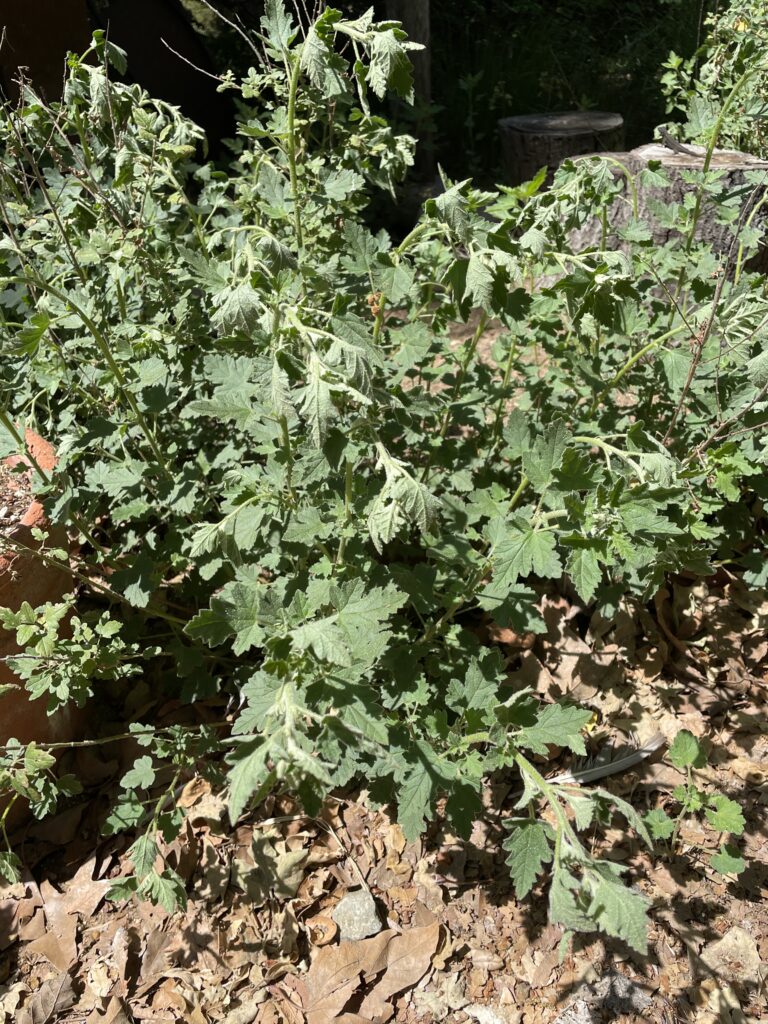
Midday depression on desert mallow, (Sphaeralcea sp.), April 2022.
Pruning
Now is the time to enjoy spring flowers and luxuriant new growth, provided you properly thinned last fall and headed back in winter. Enjoy. The next pruning task will be removing dried flowers and seed heads. We’ll talk about that in May/June.
You can pinch off the terminal buds (branch tips) on new growth to encourage side branching, essentially making the plant bushier.
Weeding
April will offer you the last of the winter weeds and the first of the summer weeds. Pull them.
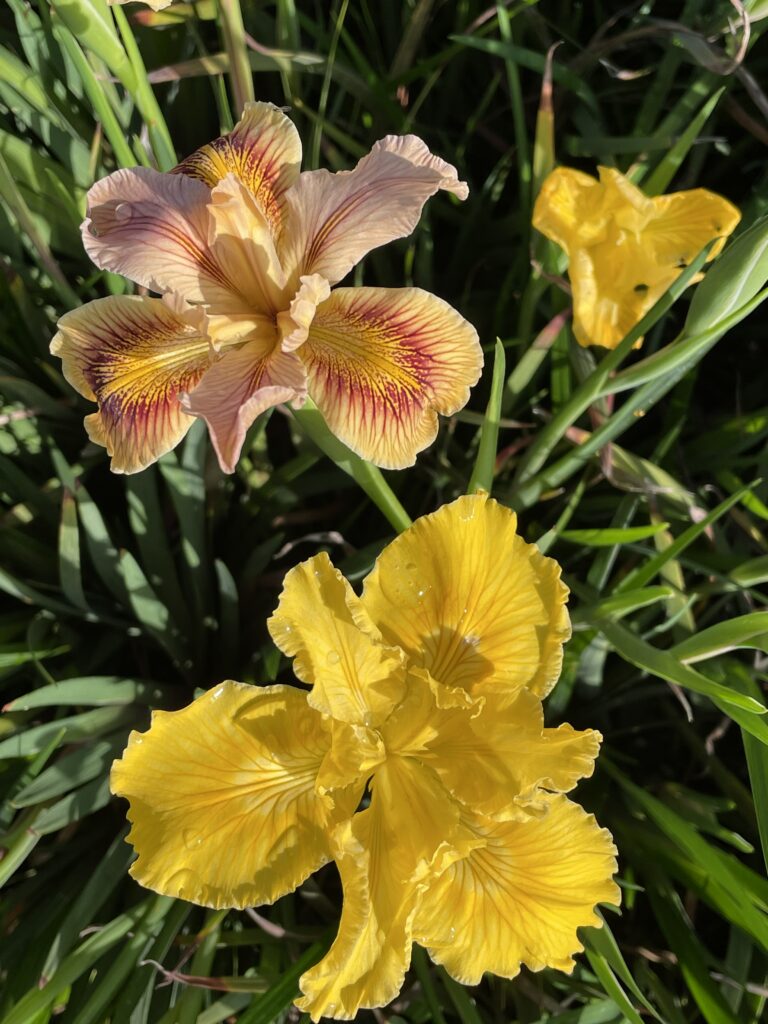
Mulching/Top Dress
No need to bring in foreign mulch at this time, but do allow the natural leaf litter under each plant to accumulate.
Feeding
See March 2022 which basically says yes. You can provide a light dose of an all purpose organic plant food about once a month or every six weeks until mid June. Remember, no feeding in summer.
Troubleshooting – Varmints, Pests and Diseases
We recently hosted a wonderful workshop by Frederique Lavoipierre, author of Garden Allies: The Insects, Birds, and Other Animals That Keep Your Garden Beautiful and Thriving. Highly recommended. We have signed copies for sale in Casa La Paz. In the natural garden it’s easy to strike a balance between the good guys and the bad guys on your plants.
See March 2022 for mention of ants and the associated problems they bring.
Annual Wildflowers
Blooming now. This would be a good time for a sketchbook or camera. Record the names. Keep track of dates. This is a fun activity.
Adding New Plants
Plant now and water so the roots will move into the surrounding soil before summer.
This is a great time for planting, as soil temperatures are rising and everything is really starting to grow. Come on over. We have beautiful crops for you right now.
Phytophilia
Literally translated “brotherly love of plants,” this section in our monthly newsletter specifically addresses the “sixth sense” we develop in our relationship with plants in general, and specifically to plants in our gardens. This month, it’s all about the sun. Every day the sun is a little higher in the sky, the arc comes from a little more straight overhead, and of course the days are getting longer. Can you feel your plants making the adjustment? Leaves getting tougher, new growth getting shorter, roots going deeper (if there’s deep moisture), flowers being formed (to be followed by seed), stems orienting more vertically, and dense foliage shading the root zone. It’s spring and the plants are getting ready for pre-summer before summer.
Important Review
It has been dry
Understand midday depression
Water if it doesn’t rain
Don’t neglect new plants
Tip prune and pinch as necessary
Maintain a balanced ecosystem for controlling pests
Don’t add mulch now
Feeding is ok
Enjoy the garden, not much pruning to do
Feel the changes in the sun
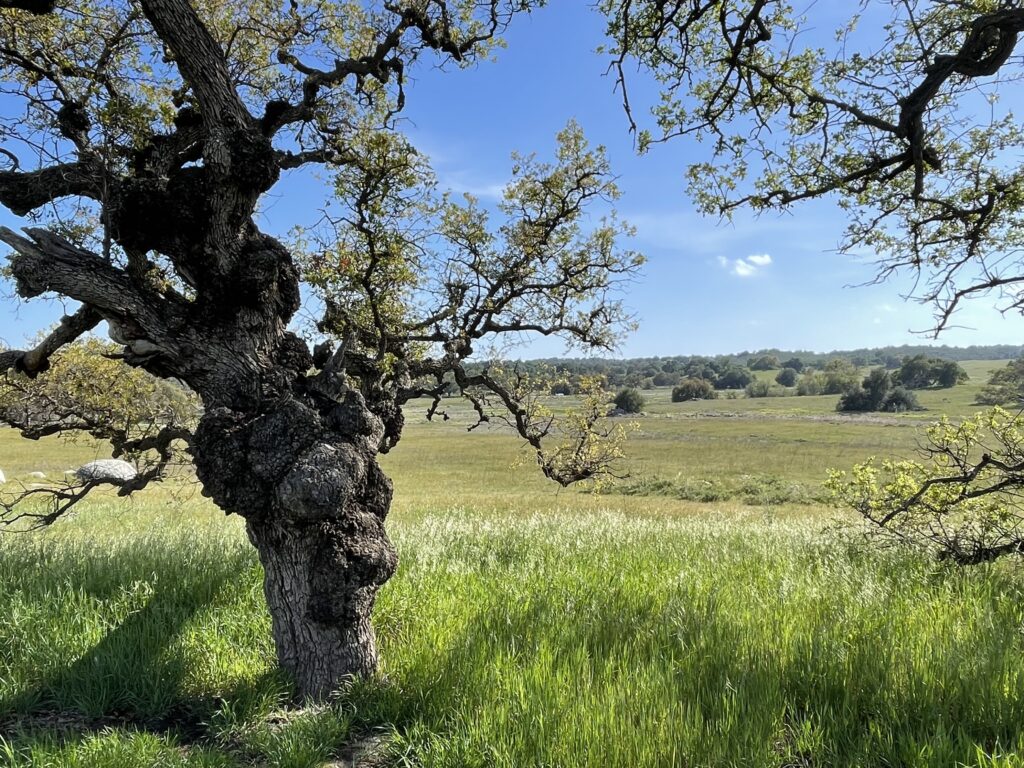
Engage
Plant people want to be around plants. (By the way, we love it when you come to Tree of Life to just walk around and experience the place, and perhaps place a few items on your shopping cart.) Plant people also like to be around other plant people… at least sometimes. Isn’t it great to see a return to good old fashioned in-person Saturday workshops here at TOLN? Also, many folks are starting to go out on group hikes. We see garden clubs and plant organizations getting back to their regular meetings. Man, we have a lot to do and a lot to talk about and it feels good.
But spending some time alone with plants feels good too. Or alone with books. Or both. One of my great pleasures is reading outdoors, often in such a position that I can close the book on my lap and fall asleep. In spring, the living is easy, abundant, hopeful. Summer’s coming and that’s good too.
Hey, it’s definitely spring! Let’s celebrate because we’re still makin’ it!
From the APRIL Natural Garden,
Mike Evans
Questions? Help is just one call or one email away. Call (949) 728-0685 or email (with pictures if you like) our special helpline: gardenhelp@californianativeplants.com